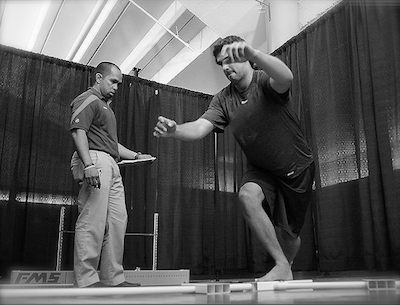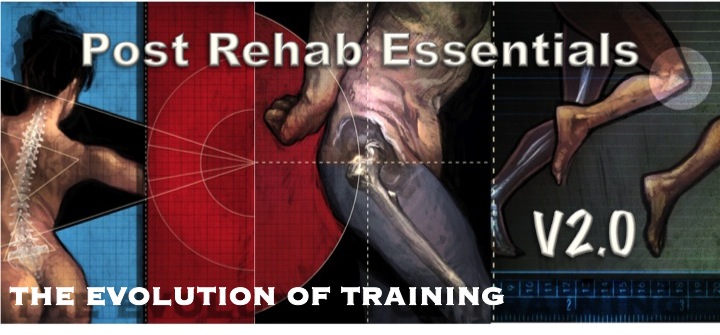How to Make Crossfit a Safer Sport
As much as I like to poke fun, I kind of like Crossfit. I’m not talking about how it sends me the odd new client who has a beat up shoulder or low back. I can get a lot of those from people who just sit for extended periods of time.
I’m talking about how it forms a level of intense training not seen in most settings. It brings a camaraderie to training that seems to be lost in many venues. I’ve said many times that creating a culture is the most surefire way to ensure your brand or program excels, and they’ve done a great job at that. Two things pretty much every kind of training program should have more of is cojones and community, and they bring a high dose of both.
They also use a lot of highly effective training principles, equipment, and methods, and do have a lot of coaches who spend time coaching and teaching their athletes on how to perform specific lifts appropriately.
But then there’s stuff like this:
http://www.youtube.com/watch?v=xfSt4AdLFzE
They take a lot of flack for doing stupid stuff and posting it on the interwebz like it’s an achievement, and also referring to themselves as “elite.” The minority of Crossfit coaches who do this tend to make the entire brand look bad, even though there’s a ton of very solid coaches out there who work on good progressions for their athletes, screening for appropriate exercise selection, and helping find regressions or progressions to help them make the most of their unique genetic situations and structures.
Mind you, we could find this kind of stuff in any training facility around the world where people put more focus on looking cool than actually training to see a smart adaptation. While I don’t doubt wearing a gas mask would challenge your cardio, unless you’re working towards being a firefighter or special ops soldier worried about Agent Orange, it’s probably best to work on getting MORE oxygen into your system, but that’s just my thoughts.
Crossfit manages to produce a lot of beasts. These are people who can outwork 90% of the workout population on any given day, and then find a Paleo food truck in any city. They tend to take more ownership of their bodies, diets, and capabilities, make themselves out to be a victim of circumstances much less than many gym goers, and tend to produce some sick looking bodies as well.
As I said earlier, I like Crossfit, for all the reasons discussed. The downside is that sometimes the message is lost in the noise and reverberation of the shouting masses. Research papers on the benefits of Crossfit style training come under fire for the notations of how many participants had to drop out due to injury, even though most high intensity training programs would produce similar drop out rates among the general population, regardless of how it was coached. Other papers showing training benefits for the armed forces lump Crossfit in with heavy leg training, kettlebell training and agility training as “non-traditional” modes of training, and still show a benefit.
There’s definitely something to it as a viable training system.
That being said, there’s still a high number of injuries that occur within it. Much like how basketball seems to produce a lot of ankle and knee issues, Crossfit seems to produce a lot of shoulder and low back issues. Maybe it’s the design of some of the movements (kipping pullups and shoulder stress, high rep deadlifts & cleans for low back fatigue), maybe it’s a rapid acceleration through the learning phases of new movements and progressing people too soon for their abilities. This could also come down to “following the standard” set out by the sport itself, without being willing to deviate for the benefit of the individual in front of them, even if it means holding off on training certain modalities altogether, or relying too heavily on sagittal plane movements.
Consider a movement like the overhead press. This takes a lot of mobility through some seriously complex structures, such as the thoracic spine, scapula, and glenohumeral joints. It also take s a requisite level of core stability to allow everything to move off a stable foundation without bringing the house down. Most people tend to have less than ideal core stability, thoracic extension mobility, and centration capacity of the GH joint, which results in overhead presses that resemble this poor bugger:
Now compare this sad example of core stability with the Ultimate Warrior pressing Macho Man Randy Savage for reps from a few decades ago, and see what an ideal spinal position should be for an overhead press.
Maybe Crossfitters should just press each other instead of barbells. It’s way more elite.
Now a lot of the issues with the first guys overhead press could have been avoided by taking a few precautions beforehand. First, screening them to see if they have the ability to move properly before getting into the mix would be a great idea, and ideally the screen would go deeper than simply asking if they have a joint issue or a heart condition. The FMS screen developed by Gray Cook and Lee Burton would have awesome implications here, and would give a coach some info on what to work on or possibly avoid. If this guy couldn’t get a manageable 2 with the overhead squat, pressing wouldn’t be a good idea. Likewise, if his fist-to-fist score was terrible or asymmetrical, pressing would be no bueno as they say in France.
If you don’t want to use the FMS, that’s cool, everyone ha their different likes and dislikes. Maybe do some other testing where you look at their ability to move in different tasks. Star excursion or Y-reach tests would be a great option to check on lower body and upper body control and range of motion and core control bilaterally.
Shout out to Jeff Cubos for the sweet pic form his site.
From the results of these test, designing a program for the athlete would have to go further than simply following the WOD from the main site. It may mean using a coaches eye to determine what the risk to reward ratio for a specific exercise would be for the individual at hand. Maybe instead of doing an overhead press with a barbell or dumbbell, you move them into a half kneeling press with a kettlebell, possibly even in the bottoms up position to encourage more stabilization of the core and shoulder?
Maybe involve some more anterior core stabilization drills to reinforce neutral spine before pressing, such as a hardstyle front plank.
If they’re really extension dominant, maybe encourage them to work on a plank with a posterior pelvic tilt. 90% of their life will be spent in over-extension, so spending a few seconds at a time in a highly braced mild flexion won’t kill them, especially if it means they reduce their hinging for overhead pressing.
Once you go through some quick and easy testing, do some alterations to the programming, beast the hell out of them, follow it up with a re-test to see if they’ve improved. If they have, cool. Then you can probably start upping the challenge and get them moving closer to an overhead press.
If they haven’t progressed with your testing, they stay where they are and continue to train like a beast without putting them at risk. It’s not too difficult.
This would take a bit more time to administer than simply plugging them into the workouts and letting them go, but it could mean the difference between having an athlete train and compete year round at a high level versus having to take 2 months off every 6 weeks to rehab an injury that keeps popping up with common issues. The 10 minutes to screen and alter a workout would pay for itself in the 2 months of training fees. That’s a sold return on your investment to ensure your investment continues to invest in your services.
I just put out a resource I think all Crossfit coaches and athletes should get. Post Rehab Essentials V.2.0 discusses a lot of common issues with exercise selection, poor execution and common postural/imbalance issues that can easily be dealt with by using smart coaching progressions and teaching athletes how to move properly. Looking at aspect of movement like breathing patterns, core stabilization and how to create movement patterns like a hip hinge or squat from the ground up can make or break any program, and PRE 2.0 goes into great depth on how to correct and coach these patterns.
Some people aren’t built for movements like pressing or deadlifting (depending on shape of their acromions or design of their pelvic structure) without an increased risk of injury, so understanding how to stop pushing water up hill and find a path of less resistance can help take a good coach and make them a great coach. Matching the athlete to the program instead of jamming a round peg into a square hole is always the better bet, and this will help give coaches way more tools to play with than they’ll probably ever need.
This 10 hour video series is on sale for only $97 (less than 10 bucks per hour!!) only until Saturday at midnight, so get on that while it’s still good and cheap. It could be the difference between crushing PR’s and spending the next 6 months recovering from surgery to fix a blown out shoulder.
That, or spend the rest of your life buying kinesiotape to wrap yourself like a mummy to compensate for a faulty program design. That stuff’s not cheap either, so for the cost of a month’s worth of Spider Tape, you can figure out how to fix yourself or your athletes. Oh, and you can also get CEU’s from the NSCA and canfitpro too.
=====> Get POST REHAB ESSENTIALS V.2.0 NOW!! <=====




16 Responses to How to Make Crossfit a Safer Sport